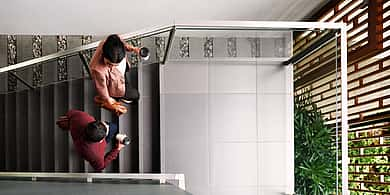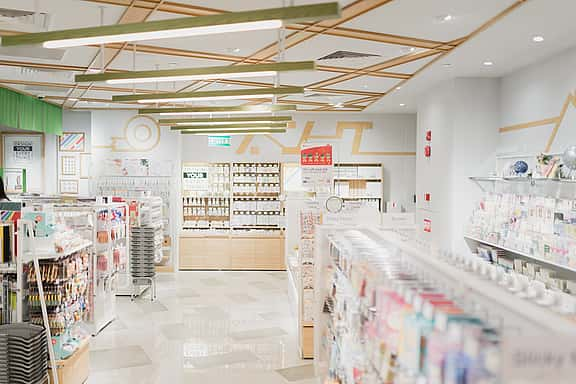Levelling up the technology in pharmacies has been a necessary evolution, given the additional pressures that the Covid-19 pandemic, NDIS, NDSS and drug regulations have placed on healthcare systems all over Australia.
Electronic prescribing
The rollout of electronic prescribing is now almost complete in Australia, simplifying and streamlining the whole prescription process.
Instead of patients having to wait for a paper copy of their prescription, at consultation their doctor can send a QR code or token to them, which can be unlocked by their pharmacist, allowing medication to be dispensed.
As the token can only be downloaded once, fraudulent activity is reduced and safety enhanced.
Another aspect to electronic prescribing is the Active Script List, which holds a list of all the patient’s active prescriptions in one place at the discretion of the patient.
A pharmacist can dispense any electronic prescription from this list, which has proved an invaluable management tool for patients with multiple or repeat prescriptions.
Enhanced verification systems
When you go to pick up your prescribed medication, there’s work that goes on behind the scenes.
One of the tasks pharmacy staff need to fulfil is to verify that you will be given the right medication in the correct dose.
This used to be an unwieldy process of a pharmacy technician checking your prescription, inputting information into a system and doing a final visual check to ensure that your prescription is correct.
Pharmacy software now enables this checking to be done using digital images and a simpler system to streamline this task and reduce the risk of human error.
Automated tablet counting machines
Gone are the days when staff would count out individual tablets or pills to make up a patient’s prescription.
Automated tablet counting machines, also known as pill counters, perform this task in a fraction of the time, sorting, counting and dispensing drugs in seconds.
Not only does this save time, but it also enhances accuracy, offering a safer and more reliable service for patients.
These pill counters are so sophisticated that the medication doesn’t come into contact with any mechanical parts of the machine, eliminating cross-contamination and the need to clean between counts.
Robotic storage and searching solutions
Robotics takes the hard work out of organising and searching for medication in the pharmacy storage area.
Machines will store packs of medication to maximise space efficiency and then retrieve drugs when required in seconds.
Not only does this free up pharmacy staff’s time and resources, but it also reduces the number of dispensing errors.
Detection of substance abuse
Drug addiction is a difficult issue to tackle, but systems that can identify and flag excessive prescriptions for certain drugs make it a whole lot easier.
Electronic prescribing of controlled substances (EPCS) systems perform this very role, alerting pharmacy staff to individuals who are presenting with excessive prescriptions for drugs such as opiates, which can be highly addictive.
Telepharmacy services
The rural nature of vast swathes of Australia means that people living in isolated communities may not have the best access to healthcare services, including pharmacies.
This health inequality has been mitigated by the introduction of telepharmacy services, allowing patients to submit prescriptions online or even consult with pharmacists remotely about health issues or questions to do with their medication.
Electronic health records for joined-up services
Electronic health records (EHR) systems have been in use in hospitals and GP surgeries for some time now and have been beneficial to pharmacies too, allowing them to track a patient’s prescription history.
This helps ensure joined-up healthcare services, removing the frustration of patients having to repeat their history to medical professionals time and time again.
Healthcare personalisation
Pharmacies are businesses, so anything that helps them improve their offer to patients is going to be attractive.
This is where healthcare personalisation comes in. Many pharmacies offer apps that remind patients when to take their medication, alert them when their current medication is running low and prompt them to order their repeat prescription.
Like any other app, it’s all about making life easier for users and tailoring services to their unique needs.
New and innovative ways of carrying out traditional tasks
Technology for pharmacies continues to develop and present new and innovative ways of carrying out traditional tasks — from the point of a prescription being ordered by a doctor through to collection by the patient in the pharmacy.
These developments are great for business, for safety and for enhancing the quality of the patient experience.
What’s more, the latest devices that aid efficiency and safety in the pharmacy are more accessible than ever thanks to leasing options. There’s no need for pharmacies to commit to huge expense to invest in cutting-edge machines when manageable monthly options are on offer.
Intrigued to find out more? Click the button below to find out about grenke's offering about medical leasing options — helping you to streamline your pharmacy business and offer your patients the safest and most user-friendly experience.






